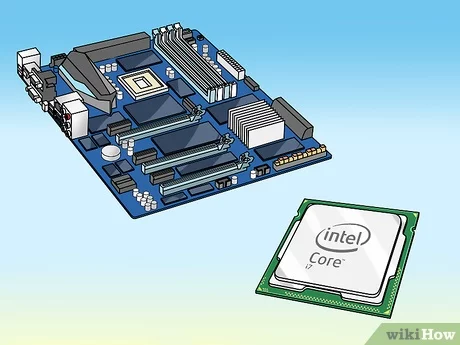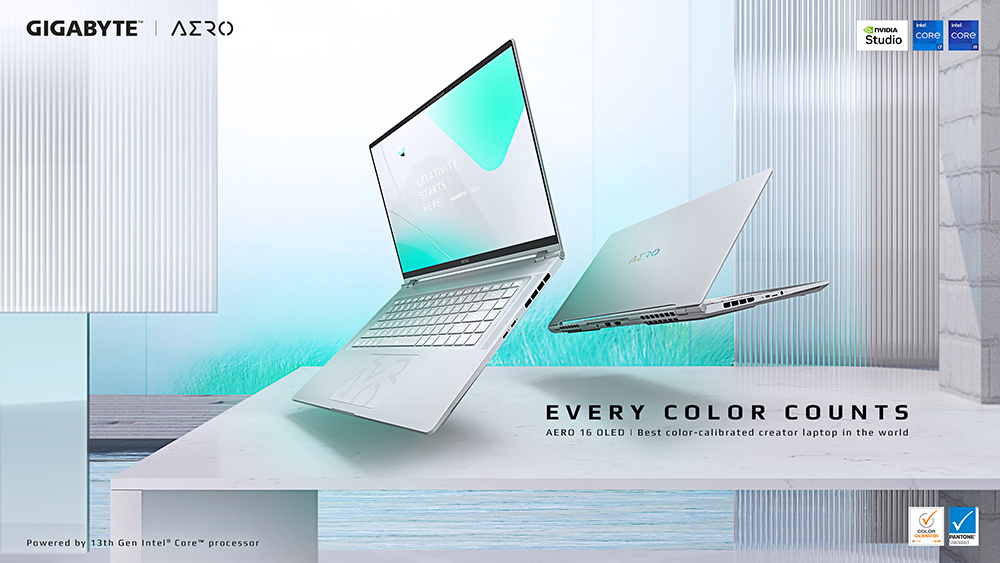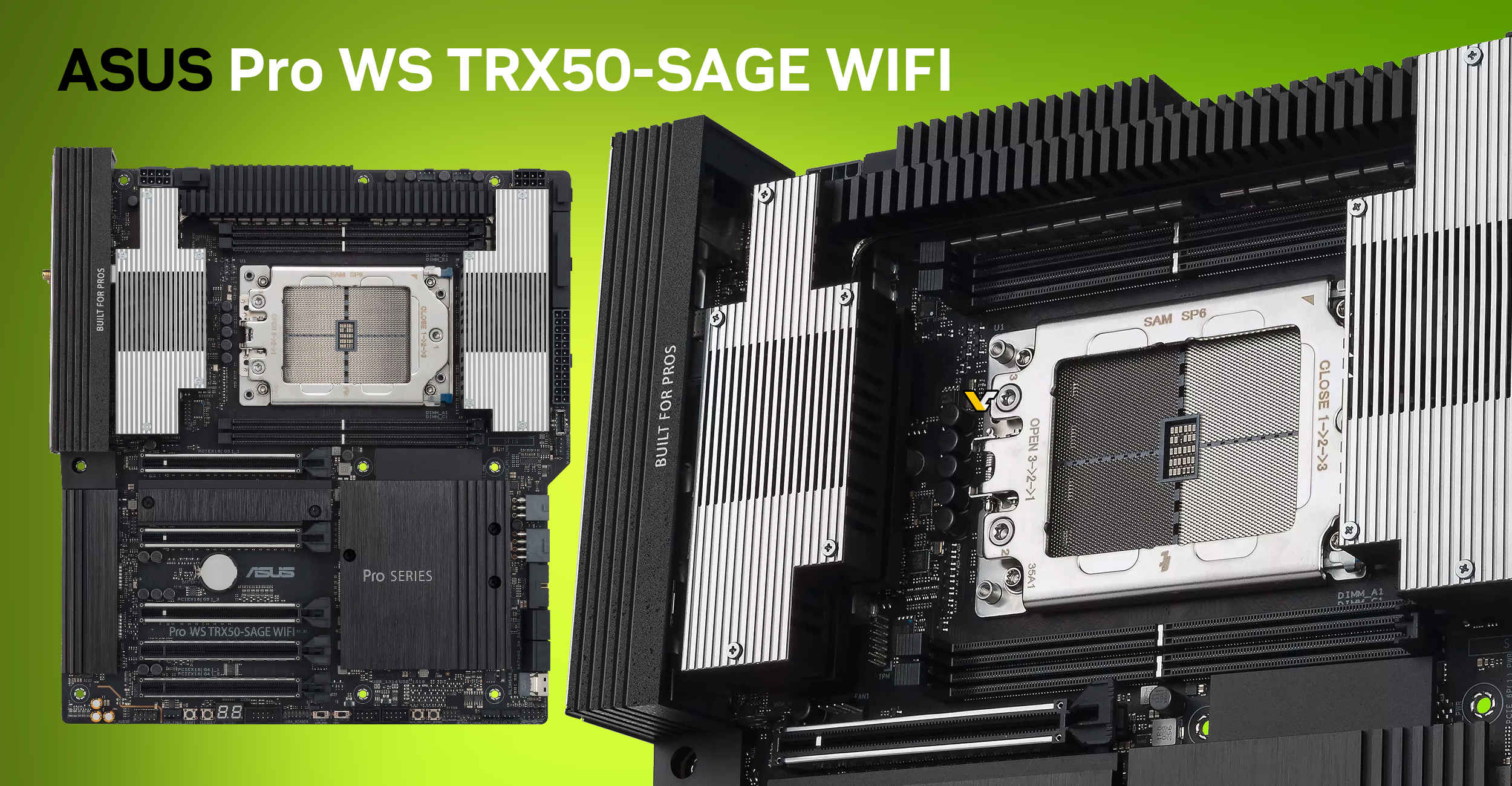You can upgrade your CPU without changing the motherboard if the new processor is compatible with the existing socket and chipset. Check the manufacturer’s specifications to ensure compatibility before upgrading.
Upgrading a CPU without changing the motherboard is a common consideration for those looking to boost their computer’s performance without a complete overhaul. This process hinges on the compatibility between the new CPU and the current motherboard’s socket type and chipset.
Before attempting an upgrade, users must verify that the motherboard can support the desired processor’s power requirements, generation, and functionality. Ensuring cross-compatibility will allow for a smooth transition and optimal performance gains. This information can typically be found on the motherboard manufacturer’s website or by consulting the motherboard’s manual. It’s a cost-effective means of extending the life and capabilities of an existing computer system.

Credit: www.ebay.com
Evaluating Compatibility
Before upgrading your CPU, it’s crucial to ensure it will work with your current motherboard. Compatibility is key. A mismatch can lead to wasted money and frustration. Let’s dive into the specifics to help you figure out what to consider.
Checking Socket Type
First on the checklist is the socket type. CPUs and motherboards connect through a specific socket. Matching these ensures they will fit together. For this, note down your motherboard’s socket and cross-check it with your desired CPU’s specifications.
- Intel and AMD use different sockets.
- Even within a brand, various models may need other sockets.
- Refer to your motherboard’s manual or the manufacturer’s website for socket information.
Understanding Chipset And Processor Harmony
Now, let’s talk chipset and processor harmony. The chipset on your motherboard manages data flow. It must support your CPU’s features. To check this, look up your motherboard’s chipset and compare it to the CPU’s requirements.
| Chipset Feature | Why It Matters |
|---|---|
| CPU Support | Determines if the chipset can run the CPU. |
| RAM Compatibility | Affects maximum speed and size of RAM. |
| PCI Express Lanes | Impacts expansion abilities and performance. |
Check for BIOS updates that might enable the support of newer processors on your existing motherboard. Match your motherboard’s chipset with the processor’s requirements to ensure compatibility and optimal performance.

Credit: www.wikihow.com
Bios Update Requirements
When upgrading your CPU, the motherboard often holds the key to compatibility. Your BIOS, or Basic Input/Output System, may require an update. This ensures the new processor works with your existing motherboard. BIOS updates can unlock motherboard capabilities and support new CPUs. Always proceed with caution, as an incorrect update can disrupt your system.
Determining Bios Version
Before updating, identify your current BIOS version. Access this information within your operating system or during boot-up. The steps vary across different systems. Here’s a simple guide:
- Restart your computer.
- Press the key for BIOS entry during boot-up, often
DelorF2. - The BIOS version displays on the main menu. Note it down.
Alternatively, use the command prompt in Windows:
- Open the Start menu.
- Type cmd and press Enter.
- In the command prompt, type
wmic bios get smbiosbiosversionand press Enter. - Your BIOS version will appear. Record it for reference.
Steps For A Successful Bios Update
Updating your BIOS is critical and must be executed with precision. Follow these steps:
- Visit the motherboard manufacturer’s website.
- Find the support or downloads section.
- Search for your motherboard model.
- Download the latest BIOS update file.
- Read the accompanying instructions carefully.
- Backup important data from your system.
- Follow the provided steps to update the BIOS, which may include creating a USB flash drive with the update file or updating directly from within the existing BIOS.
To minimize risk, do not turn off your computer or interrupt the update process. A successful update prepares your motherboard to support the CPU upgrade without needing replacement.
Performance Expectations
Upgrading a CPU involves several factors. Users often expect quicker operations, smoother multitasking, and enhanced gaming performance. Determining whether you can upgrade without changing your motherboard depends on socket compatibility and BIOS support. New CPUs may offer better efficiency, leading to energy savings and decreased heat output. However, the overall performance boost also relies on other system components such as RAM and storage devices.
Analyzing Cpu Benchmarks
Benchmarks provide valuable insights into the potential performance of a new CPU. They measure processing power through various tasks and conditions. Comparing benchmarks helps determine the expected increase in power.
- Synthetic tests simulate high-intensity workloads.
- Real applications show potential gains in everyday use.
- Comparison charts highlight improvements over previous generations.
Real-world Gains From Upgrades
Real-world gains differ from theoretical performance. Users should anticipate swifter software launches, better multitasking, and smoother gameplay. Productivity may rise with reduced processing times for complex tasks.
| Upgrade Factor | Expected Gain |
|---|---|
| Clock Speed Increase | Faster execution of tasks |
| More Cores/Threads | Improved multitasking and parallel processing |
| Cache Size | Quicker data access and processing |
| Process Technology | Enhanced efficiency and thermal performance |

Credit: www.scribd.com
Potential Bottlenecks
Upgrading your CPU without changing the motherboard sounds simple. But you might hit a few potential bottlenecks. These bottlenecks can slow down your new CPU. They are like traffic jams on a highway. Let’s look at what parts of your computer need to be good friends with your new CPU.
Identifying Other Limiting Components
First, check if your motherboard can support the new CPU. The CPU must fit the motherboard’s socket. Also, the motherboard’s chipset should get along with the new CPU. If they don’t match, your CPU won’t reach its full power.
Ram And Storage Considerations
RAM is like a desk space. More RAM means more space for your work. Your computer also needs fast storage to load things quickly.
Let’s break down these considerations:
- Check your RAM size and speed: Your computer might need more RAM to match the CPU.
- Consider upgrading to SSD: Solid State Drives (SSD) are much faster than old hard drives.
A new CPU can be like a fast car. But without a good road (motherboard), enough fuel (RAM), and a quick start (SSD), it won’t perform well. Make sure all parts can talk the same fast language as your new CPU.
Installation Best Practices
Upgrading your CPU can provide a significant boost to your computer’s performance. It is vital to follow best practices for a successful installation. Below are key steps to ensure a smooth CPU upgrade process.
Preparing For Cpu Installation
Preparing for a CPU upgrade requires attention to detail. Safety and compatibility are the top priorities. Use these bullet points to guide your preparation:
- Compatibility Check: Confirm the new CPU is compatible with your motherboard’s socket type.
- Update BIOS: Ensure your motherboard’s BIOS is updated to the latest version.
- Gather Tools: Have a non-magnetic screwdriver and anti-static wristband ready.
- Clean Workspace: Work in a clean, well-lit area free from static and dust.
- Backing Up Data: Back up important files in case of any installation issues.
Ensuring Proper Thermal Management
Maintaining a cool temperature preserves CPU health. Follow these steps for effective thermal management:
- Clean Surfaces: Use isopropyl alcohol to clean the CPU and the heatsink for a perfect seal.
- Apply Thermal Paste: Use a pea-sized thermal paste amount for optimal heat transfer.
- Heatsink Placement: Secure the heatsink evenly to prevent air pockets.
- Airflow Check: Verify that case fans direct air correctly for heat dissipation.
Following these best practices ensures a safe and efficient CPU upgrade, keeping your system running smoothly.
Long-term Considerations
Considering a CPU upgrade can lead to many questions. One crucial aspect to ponder is how this decision fits into your long-term tech strategy. Let’s dive into the details, focusing on ‘Future-Proofing Your System’ and the right moments to ‘Opt for a New Motherboard’.
Future-proofing Your System
As technology advances, keeping your system resilient against obsolescence is vital. Future-proofing ensures your computer keeps up for years. A CPU upgrade on your current motherboard can be a short-term solution. But, you must consider compatibility and future technology trends. Here are some key elements:
- Socket types – Ensure the new CPU fits your motherboard’s socket.
- BIOS updates – Your motherboard may need a BIOS update to support a new CPU.
- Performance demands – Match the CPU to your future work or gaming needs.
Bold choices now can prevent costly upgrades later. Aim for CPUs that lead the market to stay ahead.
When To Opt For A New Motherboard
Sometimes, a new motherboard is inevitable. It’s essential when:
- Your chosen CPU is incompatible with your current setup.
- New technologies, like DDR5 RAM, are not supported by your old motherboard.
- Advancements in connectivity, such as PCIe 4.0 or 5.0 slots, become necessary.
It’s a sign to graduate to a new motherboard when you hit these thresholds. A motherboard upgrade paves the way for cutting-edge CPUs and boosts overall performance.
Frequently Asked Questions For Can I Upgrade Cpu Without Changing Motherboard
Can You Upgrade Cpu Without New Motherboard?
Yes, you can upgrade your CPU without changing your motherboard, provided the new CPU is compatible with your current motherboard’s socket and chipset. Always check the manufacturer’s CPU support list before upgrading.
Is Bios Update Needed For Cpu Upgrade?
Often, a BIOS update is necessary when upgrading to a newer CPU. This ensures the motherboard recognizes the new processor. Always update BIOS carefully to avoid system instability.
What Determines Cpu And Motherboard Compatibility?
CPU and motherboard compatibility is determined by the socket type and chipset. The CPU must fit the motherboard’s socket, and the chipset should support the CPU’s generation and features.
Will Upgrading Cpu Improve Computer Performance?
Upgrading your CPU can significantly improve performance, especially if the new processor has more cores, higher clock speed, and newer architecture than your current CPU.
Conclusion
Upgrading your CPU without changing the motherboard is indeed possible, but it requires diligence. Ensure compatibility with your chipset and socket type. It’s a cost-effective move that can extend your system’s lifespan. Always remember to check the manufacturer’s specifications first to secure a seamless upgrade for improved performance.



